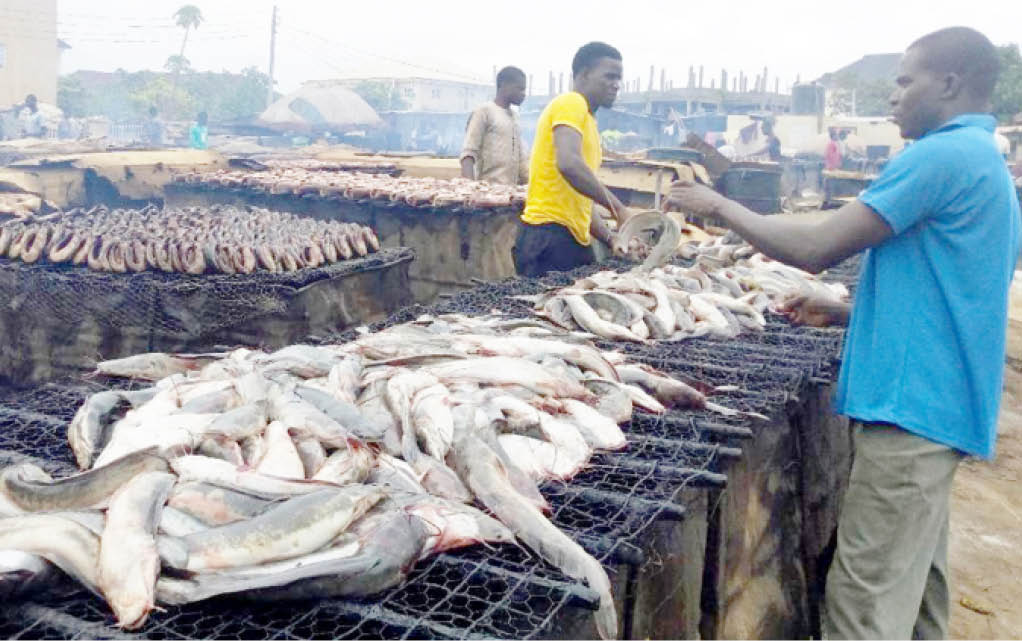A few days ago, the Food and Agriculture Organisation (FAO) of the United Nations brought farmers, breeders and other stakeholders who have been very active in Nigeria’s catfish industry to look at major issues in the catfish value chain.
At the FAO-FISH4ACP farmed African catfish value chain validation meeting in Abuja, farmers, breeders and other actors took turns to point out major issues affecting the business and how the industry is threatened by diminishing catfish genetic resources, lack of industry proper regulatory mechanism, lack of a breeding programme, indiscriminate mixing of genetic resources and host of other issues.
- NRM’s national convention for March 30 in Abuja
- As nations prioritise clean energy, Nigeria still struggling with fossil fuel
Nigeria is the world’s largest producer of catfish, one of the most commercially important freshwater fish species in Africa. Catfish is the most popular fish on the local market. There is also a substantial trade in smoked fish to neighbouring countries and Nigerians in the United States, Europe and the Middle East.
The FAO statistics showed that the country’s aquaculture production grew from 22,000 tonnes in 1999 to over 300,000 in 2017.
The industry today is worth N261.8 billion, according to an estimate from the FAO-FISH4ACP project seeking to help farmers with improve access to key export markets and enhance productivity.
Ninety per cent of Nigerian fish farmers’ activities are in the catfish production, providing an estimated one million direct jobs along the value chain. Fish make up over 40 per cent of Nigeria’s protein intake, with per capita fish consumption at 13.3kg per year.
In a presentation in Abuja, the team leader, Value Chain Analysis, FAO-FISH4ACP, Mr Severin Oman, highlighted key research findings about the Nigerian catfish industry despite being the continent’s biggest farmed fish industry.

He said that because of the changes in climate and water, farmers reported having an impact on their fish quality, which could be addressed through breeding programmes, which would develop fish that would be more productive and adaptable to changing temperatures and climate change.
Oman also noted that Nigeria may lose its natural genetic material because the country has hybrids of fish that have been bred into fingerlings indiscriminately, and then they might escape into the natural environment to breed with natural fish, adding that this may lead to degradation, or eventually loss of the natural species.
He emphasized that this is really a threat to the sustainability of the overall value chain in the future.
The expert also worried that there are so many informal hatcheries and many of them operated by people that don’t necessarily have the skills. They need more training on capacity building. And this lack of control over the seed is leading to a decrease in the productivity of the value chain.
Another issue raised was feed, in which prices are high, and they are increasing. With COVID-19, it really went through the roof. But the major problem identified was the lack of a sustainable source of protein in Nigeria; and that drives up the prices.
It requires some effort to identify local sources of protein, even like insect protein that can be used in introducing some innovative sources of protein. Other local ingredients are also expensive.
There’s a rather weak sort of regulatory system that allows sort of imbalances between wholesalers and small producers; cultural practices that limit women; and lack of strong association further weakens the sector.
Mr Bassey Jacobs, the president of the Fish Breeders Association, noted that the domination of the market by frozen fish for a while made people believe that frozen fish was cheaper.
He disagreed with those who think farmers should be encouraged to produce their own feed, stressing that “from research we discovered that it will be more expensive to produce than to buy from the dealer. There was a time I was given grants to produce, but I discovered that the cost of production was very high. For my friend that produces his feed, his machine is less than one year, but every six months the machine will break down and it costs a huge amount of money to maintain.”
Instead of smallholder farmers producing their feeds, he recommended a synergy between top feed producers and local producers. He also thinks that if the bank could finance the bulk producers to produce the feed and supply to the local producer, the cost would be cheaper.
He recommended a farm and a water treatment plant for breeders.
Dr Agbabiaka Adegoke, the national president of the Fisheries Society of Nigeria, and coordinator Afrifish for ECOWAS under AU-IBAR, said there must be a renewed focus on the fishery sector, especially when it comes to harmonisation of research data to address the industry’s problems.
However, Mr Israel Ade, a fish expert with over 30 years’ experience in the sector, drew attention to what he considered a huge problem that needs to be addressed when it comes to fingerling production: it is obvious that there is a depreciation of the genetics and available brood stock in Nigeria.
He observed, “There was a time when our African catfish was introduced to Vietnam, and the country continued to improve on it and recorded a boom because our catfish was rugged and can survive certain conditions.’’
He advised that the parent stock of that breed should be introduced into the country to mix up with ours.
He particularly called for a policy to discourage the indiscriminate cross-breeding of the different species of catfish by people, adding that it could lead to species that would not be properly identified.
“We discourage people from this idea of mixing heterobranchus with clarias because the hybrid could still fertile about 12 to 14 months. And that actually leads to a lack of clarity. Is it clariasbatrachus or is heterobranchusbidorsalis? Something has to be checked in that regard.
“Then, there’s this issue of triploid. A couple of universities are doing research and passing it to farmers that they should go triploiding. Triploidy is the presence of an additional set of chromosomes in the cell for a total of 69 chromosomes rather than the normal 46 chromosomes per cell. The extra set of chromosomes originates either from the father or the mother during fertilisation.
“You triploidy to make a fish to grow big, but it is unfair on the gene population eventually because if you freeze the gemmate of the male to have a triploid stuff, eventually the triploid won’t be fertile.
“Triploid are never fertile. Eventually you are going to have a mix of frustration amongst producers because triploid are never fertile. And who is going to check that people do not triploidise their fish?
“Finally, people want their fish to grow big. Now, one thing I found about feeds is this: importers buy poultry meal instead of fishmeal.
“I was in Germany about three years ago, and one of the importers who sent materials to China and the rest mentioned a big importer in Nigeria, who, instead of buying the quality materials that would go into, like fish meal, they bought poultry meal and other substandard materials.
“It is only in Nigeria that such a thing can happen. We need a system that will prevent Nigerian farmers from being cheated,” he said.
He wants the country to go ahead and assist in this idea of getting alternatives to high-quality feeds, which has a significant role in helping farmers to produce and enhance the quality of the fingerling produced.
In his submission, Emeka Elualu of the T. Martins Aquaculture Business Group, who is also the managing director of the Anambra State Fisheries and Aquaculture Business Development Agency, drew attention to the fact that a farmer’s scale of operations is connected to the cost of feed.
“Every day we talk about feed being the problem of our fish farmers. We should be able to come to terms that your experience with feed and cost of production has a direct link with your scale of operation.
“People say that for small scale farmers, it is better to buy directly than through dealers and all that. So it is a multi-dimensional thing we need to look at. So, maybe further down, we may have to be able to consider that,” he said.
From the various issues raised at the meeting, it appears the catfish industry, which, like poultry, is threatened by feed, needs intervention to strengthen and take advantage of the emerging market, locally and internationally.

 Join Daily Trust WhatsApp Community For Quick Access To News and Happenings Around You.
Join Daily Trust WhatsApp Community For Quick Access To News and Happenings Around You.


